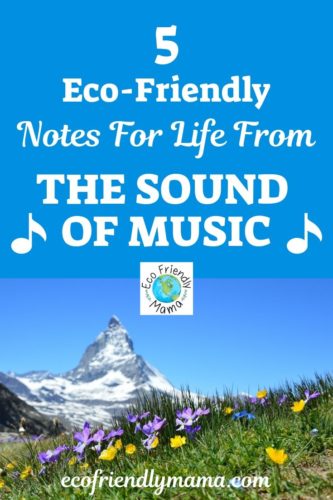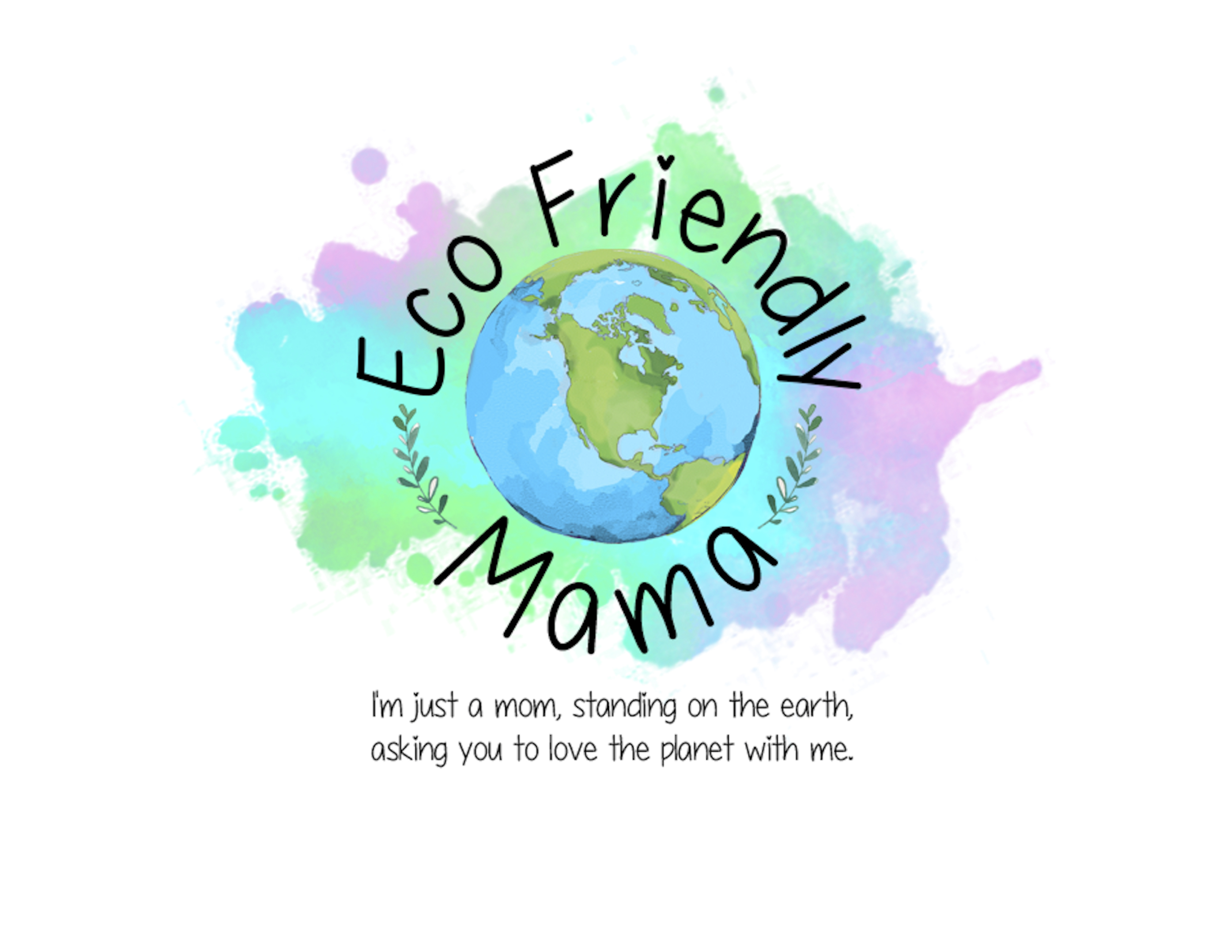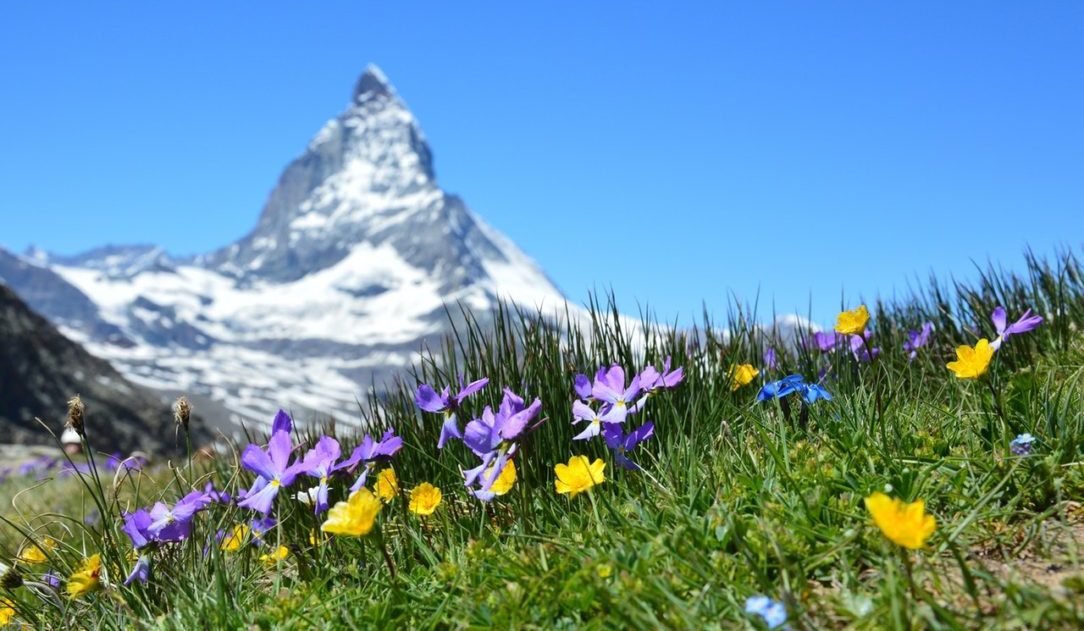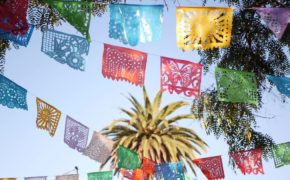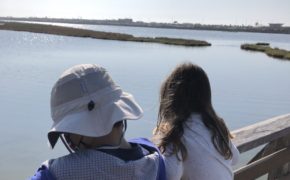5 Eco-Friendly Notes For Life From THE SOUND OF MUSIC
Recently, I sat down with my husband and kids and rewatched the classic movie, THE SOUND OF MUSIC. Though I’d seen it dozens of times before as a child and still know every song by heart, it’d been decades since I’d watched it completely. So, seeing the film as an adult felt like I was watching it for the first time. And now – as a person who has come a long way on my sustainability journey since childhood – I realized that there are some really beautiful and eco-friendly life lessons within this beloved story.
If you have never seen THE SOUND OF MUSIC, here’s my quick summary: Based on a true story, a nun becomes a nanny when she moves into the home of a windowed Navy captain and his seven unhappy children. Through her passion for music and life, the nun teaches the children and their father to love again. And as it happens, the father and nun fall in love with each other, but are forced to flee their Austrian homeland in a daring escape from the German Nazis.
It’s hard to truly do the story justice without the music, written by Rodgers & Hammerstein.
This was the first time that both my kids and my husband saw the movie. They all loved it. And the film is quite honestly easy to love in all its earnest glory. You don’t have to have seen the movie to understand the eco-friendly concepts I’ll be mentioning later on in this post.
However, if you haven’t seen THE SOUND OF MUSIC yet, or have seen the movie but it’s been a while, here are some ways you can get to know this epic story and music:
By the way, this post contains some Amazon Affiliate links, which cost you nothing to click on but could earn me a small commission. For more info, please visit my Disclaimers Page.
We rented the 50th Anniversary Edition of THE SOUND OF MUSIC, which includes a really wonderful documentary at the end with Julie Andrews returning to the town where the story takes place (Salzburg, Austria) and where some of the film was shot.
Though THE SOUND OF MUSIC film is rated G and has very little violence or inappropriate language, it is still rated for age 6+ on commonsensemedia.org. So if you feel like your child is too young to watch the movie (or won’t be able to sit through its nearly 3 hour running time!), there are other options to introduce them to the story.
We also have this sweet board book called Broadway Baby: The Sound Of Music Do Re Mi. It features the lyrics of all THE SOUND OF MUSIC songs. And though you can just read them aloud like regular lines in a book, I find myself breaking out into song every time I read these lyrics to my toddler.
Or, if you have an Amazon Prime account, you can listen to the music soundtrack featuring the original Broadway cast for free!
The soundtrack from the recent live television production starring Carrie Underwood is also available on Amazon Prime Music at no additional charge.

Full disclosure: I haven’t listened to this soundtrack yet, but the music by Rodgers & Hammerstein is so brilliant, I’d happily listen to any version of it…especially if it’s free to me!
And now, without further adieu, adieu, to yieu and yieu and yieu….
Here are the 5 eco-friendly “notes” or life lessons you can learn from THE SOUND OF MUSIC:
Play In Nature
We all know the iconic opening scene from THE SOUND OF MUSIC, right? Where Julie Andrews, as Maria, is boldly twirling on the top of a mountaintop and singing her heart out. Later on in the movie, Maria talks to the Reverend Mother about how she grew up climbing that mountain and how it feels like home to her:
“I could never be lost up there. That’s my mountain. I was brought up on it.”
Maria makes a strong statement on the importance of having a real connection with nature here. She goes to the mountains and sings that “the hills are alive….”
But in reality, the hills make her feel alive.
It’s her love of nature and connection with the earth that give her joy. She – and all of us really – need to have those moments of connecting with the outdoors at some point in our day. Whether it’s roaming the wild hills of Salzburg, or walking through a city park on your lunch break, or something in between like exploring a local wilderness preserve and strawberry picking, the point is: get out there and enjoy life in the outdoors on a regular basis!
Upcycle, DIY, and Thrift
Another iconic moment in THE SOUND OF MUSIC is when Maria decides to make play clothes for the children. Captain Von Trapp refuses to buy her new cloth so she resorts to making them from her bedroom curtains which are slated to be replaced anyway.
This is such a good lesson in the value of upcycling and DIY. The curtains, which let’s be honest are not the most exciting print to look at, might’ve ended up in the local Salzburg landfill. But instead thanks to Maria’s ingenuity and thrifty spirit, the curtains get upcycled into a whole new wardrobe for the kids, freeing them to climb trees without fear of ruining their fancier duds. It’s an eco-friendly DIY win-win!
There’s also a very subtle detail about thrifting that I totally missed until a saavy viewer pointed it out in the trivia section of the movie’s IMDB listing. When Maria first shows up at the Von Trapp family home, the Captain questions her about the rags she’s wearing:
Captain Von Trapp: It’s the dress. You’ll have to put on another one before you meet the children.
Maria: But I don’t have another one. When we entered the abbey our worldly clothes were given to the poor.
Captain Von Trapp (pointing to the shabby outfit she has on): What about this one?
Maria (sheepish, shrugging): The poor didn’t want this one.
Such a great line! Later in the movie after Maria has briefly returned to the abbey, she consults with the Reverend Mother about going back to the Von Trapp family. As she enters the office, a young woman who has just pledged her life to the convent exits wearing a green dress, presumably off to renounce her worldly possessions. Shortly afterwards we see Maria returning to the Von Trapp home wearing, yep you guessed it, the same green dress!
Another brilliant detail of this movie. And an important lesson here too about fashion. Just because something is used doesn’t mean it can’t still look fabulous on you.
While I do understand the thrill of buying something fresh off the rack, thrifting from a thrift store or consignment shop (or the Reverend Mother’s closet) is a eco-conscious alternative to fast fashion.
Shop Local, Shop Fresh
While Maria and the children are singing the song, “Do Re Mi,” they stroll through town and stop at a local farmer’s market. This may be a more subtle scene in the movie, and perhaps in that era before the rise of the super market there was little choice but to shop local. But watching this in the 21st century, it’s now become a good reminder of the benefit in shopping local and shopping sustainable. After all, organic ripe tomatoes fresh from the local farm taste so much better than their hot-house GMO cousins that have been wrapped in plastic and shipped across the country.
Now, if only we could all juggle our organic farmer’s market tomatoes as skillfully as Julie Andrews….
The Family That Sings Together
I wrote a post a little while ago about screen-free zero-waste ways to entertain kids in the car. In our home, we try to limit screen time for our kids and prioritize time together instead. True, television wasn’t really around in the era that THE SOUND OF MUSIC takes place. But you don’t see them sitting around the radio all day either. The Von Trapp children entertain themselves by creating music and more importantly, by spending time together.
The lesson here is not that television is evil. It’s that screens, or radios, or whatever other kind of solitary entertainment, are no substitute for true human connection.
It’s also a lesson that children don’t always need things to be happy. They don’t need to be surrounded by toys or receiving gifts all the time to be entertained. What they crave most of all is love and meaningful interactions.
Now, you don’t need to convert your family into a singing group to have a joyful life. But by finding something you can do together that is not dependent on things so much as it is on human connection, those memories will become priceless.
Human Rights Make The World Go Round
Speaking of human connection, there’s also a very timely lesson in this story about the importance of our common humanity and future together. Captain Von Trapp is vehemently against the Nazi movement in this story (which is set just at the cusp of World War 2). He refuses to fly the Nazi flag with a swastika on it at his house because it symbolizes hate and the very self-centered concept that one race of people is better than any another. The Captain ends up risking his life, and forever giving up his home, his wealth, and his country, to stand up for his humanitarian principles.
This to me is another facet of loving the planet. If you truly care about the health and well-being of the earth, that also means caring for the health and well-being of all its inhabitants.
I’m not saying you should abandon your home to trek across the Alps. But if we’re going to survive collectively, we must work collectively, and love each other as we do ourselves. That, truly, is the only way forward that doesn’t end in global destruction.
So long, farewell, auf weidersehen…and let me know in the comments what you think about this post!
